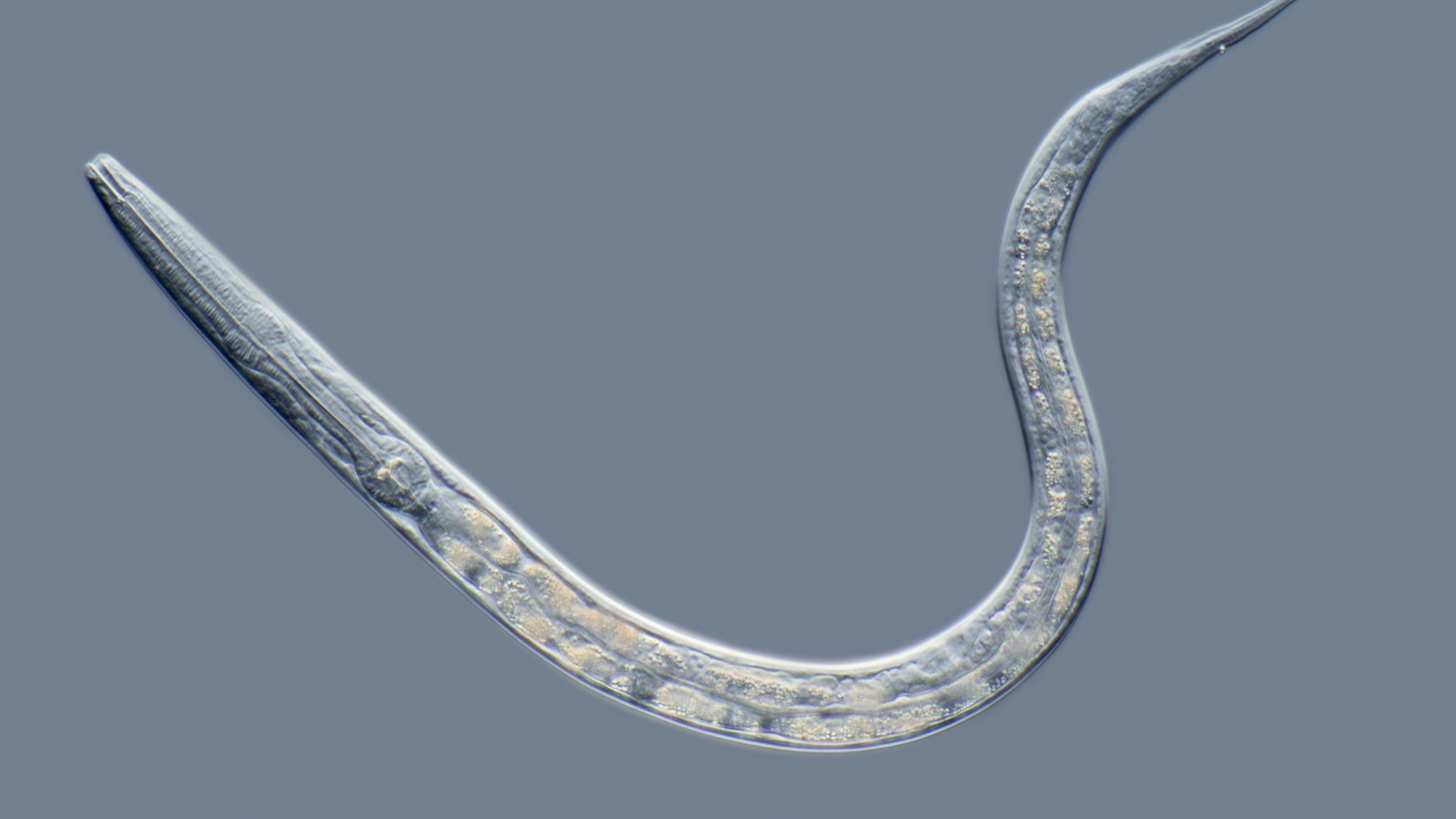It is hard to see the Caenorhabditis elegans, or C. elegans, with the naked eye. This little roundworm is no longer than 1mm. It is very important, though, especially to scientific research.
It is hard to see the Caenorhabditis elegans, or C. elegans, with the naked eye. This little roundworm is no longer than 1mm. It is very important, though, especially to scientific research.
Beautifully simple
C. elegans is one of the most simple animals. It has no heart or circulatory or respiratory systems. It takes in oxygen through its skin. It does have a complete digestive system which processes food and excretes waste.
Research specimen
Scientists use C. elegans as a specimen in genetic research into all kinds of processes which are important in the development of organs, the occurrence and development of cancer, aging and Alzheimer's disease. These processes in the roundworm have many similarities with their counterparts in higher organisms, including humans.
Two sexes
Caenorhabditis elegans has two sexes, hermaphrodite and male. The hermaphrodites have both male and female genitals. They therefore do not need a male to fertilise their eggs. They produce sperm at an early stage in their development and store it in their bodies.
The male’s use
Despite the fact that the hermaphrodites can fertilise their own eggs, they prefer to have this done by the males. This allows for genetic variation and is advantageous as far as evolution is concerned. The problem is that only 0.1% of all C. elegans are male.

